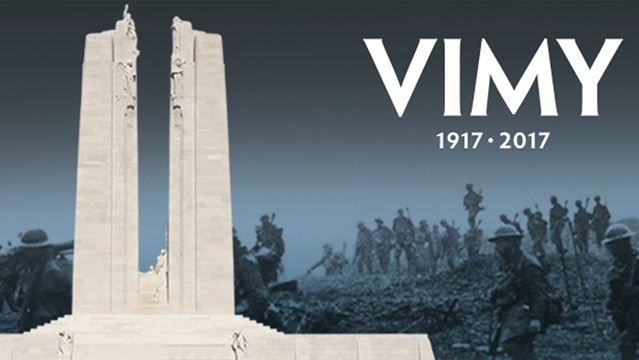My disappointment started as a dull buzz, an annoying thrum. It was Sunday morning, I was watching the centennial commemoration of the Battle of Vimy Ridge. As the minutes passed and the ceremony trundled on, my disappointment built a head of steam until it had the full locomotive roar of rage.
And in the days since, it's sat there, a stone of anger, weighing on me.
Perhaps I was expecting too much out of the day. A celebration of a grand tactical victory a century ago that led to little strategic gain in a war known best for the ghastly futility of its fighting is a hard thing to pull off. But even still, I expected something more than what we got. Something with weight, a dash of dignity.
There were some ominous signs right from the beginning. Warning signs that things weren't quite right.
First, there were the boots. Thousands of black combat boots, one pair for each of the 3,598 men who died during the battle, were placed around the memorial. They were touching, but oddly out of place. What were they doing there? Where did this tradition come from?
No matter, maybe they aren't a Canadian remembrance tradition, but there's no great harm done, I told myself. It didn't seem like the time to get upset over misappropriated symbols.
Then there were the Mounties, standing guard of the memorial. At first glance, of course the Mounties are there. They're a symbol of our Canadianness, known around the world, and all that. But the more I thought about it, the more I wondered what are civilian police doing standing at attention in front of a military moment? Why are they standing solemn guard over the monument's tomb? And why are they marching along behind real soldiers?
Sure, members of the Royal North-West Mounted Police, as the RCMP was known then, fought at the battle. But they didn't fight as Mounties, they fought as soldiers.* Bakers fought in the war too, but you didn't see them in their dress whites, marching with baguettes smartly on their shoulders.
From there, things descended into farce.
Interspersed between each speech would be some kind of multimedia production. An actor — Paul Gross needs to do something — would read from the diary of a soldier or nurse. Or there'd be some interpretive dance. Or maybe a maudlin pop song.
As the day progressed, the ceremony would see-saw wildly between speeches warning of the deadly consequence of war, and familiar Canadian artists preforming breathy melodrama while the TV camera cranes swooped over the crowd.
It was hard to square a speech with lines like this one, from Prince Charles: "Today it is hard to believe possible the horrors that unfolded here on the 9th of April, 1917. This was a battlefield of corpses. The terrifying roar of massed artillery filled the air…. Boot-deep mud rendered each step a struggle, amidst the deadly relentless hail of bullets."
Compared to this, later on, from pop-country singer Johnny Reid, singing his song Dedicated to You: "Everybody needs somebody to hold on to/And everything I've ever wanted I found in you/I know what I feel and I know that it's real/It's all for you."
I really can't describe the honest-to-god outrage I felt watching Reid wander in front of the memorial like it was an arena stage wailing away, while a guitar solo rips out over the PA. This is what they had immediately following the pipes and the Last Post. I'm sitting here replaying it now, and still can't believe it actually happened.
It's as if the organizers watched a few Remembrance Day ceremonies and decided what was really missing on such solemn occasions was a Junos showcase.
It felt like some half-mad extension of Canada Day, another chance to put on your red clothes and wave a Maple Leaf. Except in this version there'd be some grave talk of maiming along with a wreath laying shoehorned in.
All the reverence in the speeches, all the pleas to "remember them" and honour the memory of the dead, seemed so empty alongside the multimedia spectacle.
I watched all this Sunday because my great-grandfather was there a century ago, riding in the cavalry. It felt important to watch, to think of him and what it might have been like that day.
My grandmother watched, too. Her uncle Dave also fought at Vimy. I talked to her later that day to see what she thought. She told me about her uncle and how he put her up during high school. How one of her cousins gave up her bedroom, so my grandmother had a room to herself. How she remembered her uncle listening to "the bands" at night on his radio, but never the news.
I asked her what she thought of the ceremony, looking to validate my own dismay. She told me she thought it was quite good. "But," I asked not understanding, "what about all the singing?"
"Oh that?" she said. "I left the room for that."
***
* A company of Mounties would eventually be attached to the Canadian Expeditionary Force. But that wouldn't be until 1918, after the force was no longer needed to keep tabs on German- and Austrian-Canadians—"enemy aliens"—on the prairies.






